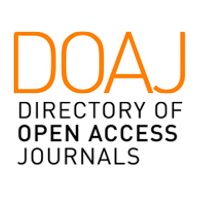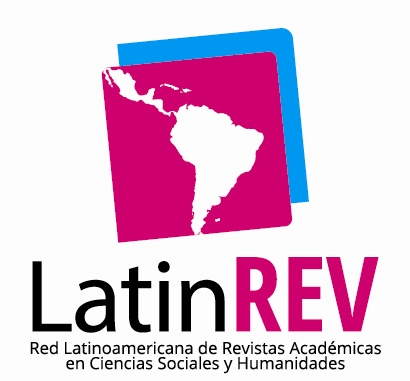El sistema de creencias del docente y su implicancia en la enseñanza-aprendizaje del inglés
Resumo
Este artículo examina las diferentes conceptualizaciones del sistema de creencias de los docentes. Aborda, además, el sistema de creencias como una base conceptual, personal, subjetiva y dinámica que tiene un impacto significativo en la actuación docente y en el proceso de cambio en educación. También, examina como las variables didácticas del proceso de enseñanza-aprendizaje se encuentran fuertemente influenciadas por el sistema de creencias del docente.
Palabras claves: Creencias, Inglés, Docente, Práctica pedagógica.
Downloads
Referências
ASHTON, P.T., Y WEBB R.B. (1986). Making a difference: Teachers'sense of efficacy and student achievemet New York: Longman
BANDURA, A. (1986). Social foundations of thought and action: A social cognitive theory. Englewood Cliffs, NJ: Prentice-Hall
BROOKHART, S.M. Y FREEMAN, D.J. (1992). "Characteristics of entering teacher candidates". Review of Educational Research, 62, 37-60
CAMPS, A. (2001) El aula como espacio de investigación y reflexión. Investigaciones en didáctica de la lengua. Barcelona: Grao
CHEVALLARD, Y. (1991). La transposición didáctica. Del saber sabio al saber enseñado. Buenos Aires Aique, págs. 44- 45
CLARK, C.M. (1988). "Asking the right questions about teacher preparation: Contributions of research on teacher thinking". Educationaí Researcher, 17(2), 5-12
CROOKES G. (2003). A practicum in Tesol. Professional development through teaching practice. Cambridge: Cambridge Language Education
DECKERT, G. (1987) "The communicative approach: helping student adjust" Forum, July 1987, 25 (3), pp.17-20
DEFORD, D. (1985). "Validating the construct of theoretical orientation in reading instruction". Reading Research Quarterly, 20, 351-367
DUFFY, G. (1981). Theory to practice: How does it work in real classrooms? Research Series No. 98. MI: Institute for Research on Teaching, College of Education
GOODMAN, J. (1988). "Constructing a practical philosophy of teaching: A study of preservice teachers' professional perspectives". Teaching and Teacher Education, 4, 121-137
FIARMER, J. (1991). The practice of English language. New ed. London: Longman HOFFMAN, J.V., Y KUGLE, C. (1982). "A study of theoretical orientation to reading and its relationship to teacher verbal feedback during reading instruction". Journal of Classroom Interaction, 18, 2-7
JOYCE, B., MARSHA, W. Y CALHOUN, E. (2002) Modelos de enseñanza. Barcelona: Gedisa
MAYER, R.E., DYCK, 1., Y COOK, L.K. (1984). "Techniques that help readers bu ¡Id mental models from Science text: Definitions of training and signalling". Journal of Educationaí Psychology, 76, 1089- 1105
MONTIJANO, M. (2001). Claves didácticas para la enseñanza de la lengua extranjera. Málaga: Aljibe
NESPOR, J. (1987). "The role of beliefs in the practice of teaching". Journal of Curriculum Studies, 19f 317-328
NUNAN, D. Y LAMB, C.(1996). The self directed teacher. Managing the learning process. Melbourne: Cambridge University Press
PAJARES, M.F. (1992). "Teachers beliefs and educationaí research: Cleaning up a messy construct". Review of Educationaí Research, 62(3), 307-332
PAZ, M. Y SANDÍN E. (2003) Investigación Cualitativa en Educación. Fundamentos y Tradiciones. Madrid: Me Graw Hill
RICHARDS, J. Y RODGERS (1986). Approaches and methods in language teaching.Cambridge: Cambridge University Press
RODRÍGUEZ, G., GIL, J. Y GARCÍA, E. (1996) Metodología de Ia investigación cualitativa. Málaga: Aljibe
RODRIGO, M. J. (1993). "Representaciones y procesos en las teorías implícitas". En: M.J. Rodrigo, A. Rodríguez y J. Marrero, Las teorías implícitas. Una aproximación ai conocimiento cotidiano pp. 95-122. Madrid: Visor
SUSO, J., FERNÁNDEZ, M. (2001) La Didáctica de la lengua extranjera. Fundamentos teóricos y análisis del currículum de lengua extranjera (Educación primaria, ESO y Bachillerato. Granada: Editorial Comares
TABACHNICK, G., Y ZEICHNER, K. (1984). "The impact of student teaching on the development of teacher perspectives". Journal of Teacher Education, 35(6), 28-42
THARP, R., Y GALLIMORE, R. (1988). "Rousing minds to life: Teaching, learning, and schooling in social context". NewYork: Cambridge University Press
THOMPSON, A. (1992). "Teachers' beliefs and conceptions: A synthesis of the research". In D. Grouws (Ed.), Handbook of research in mathematics teaching and learning. pp. 127 - 146) New York:
MacMillan TOBIN, K. Y IMWOLD, D. (1993). "The mediational role of constraints in the reform of mathematics curricula". In Malone, J. & Taylor, P. (Eds.). Constructivist Interpretations of Teaching and Learning Mathematics. pp. 15-34. Perth, Western Australia: Curtin University of Technology
WEINSTEIN, C S. (1989). "Teacher education student's perception of teaching".Journal of teaching education, 40 (2), 53-60
WILLIAMS, M. Y BURDEN, R (1999) Psicología para profesores de idiomas. Madrid: Cambridge University Press
WOODS, P. (1996). Teacher cognition in language teaching: beliefs, decisión-making and classroom practice. Cambridge. CUP
Downloads
Publicado
Edição
Seção
Licença
Política de acceso abierto
Esta revista proporciona un acceso abierto inmediato a su contenido, basado en el principio de que ofrecer al público un acceso libre a las investigaciones ayuda a un mayor intercambio global de conocimiento.
Licencia
Revista REXE "Revista de Estudios y Experiencias en Educación" de la Facultad de Educación, Universidad Católica de la Santísima Concepción, está distribuido bajo una Licencia Creative Commons Atribución 4.0 Internacional.






